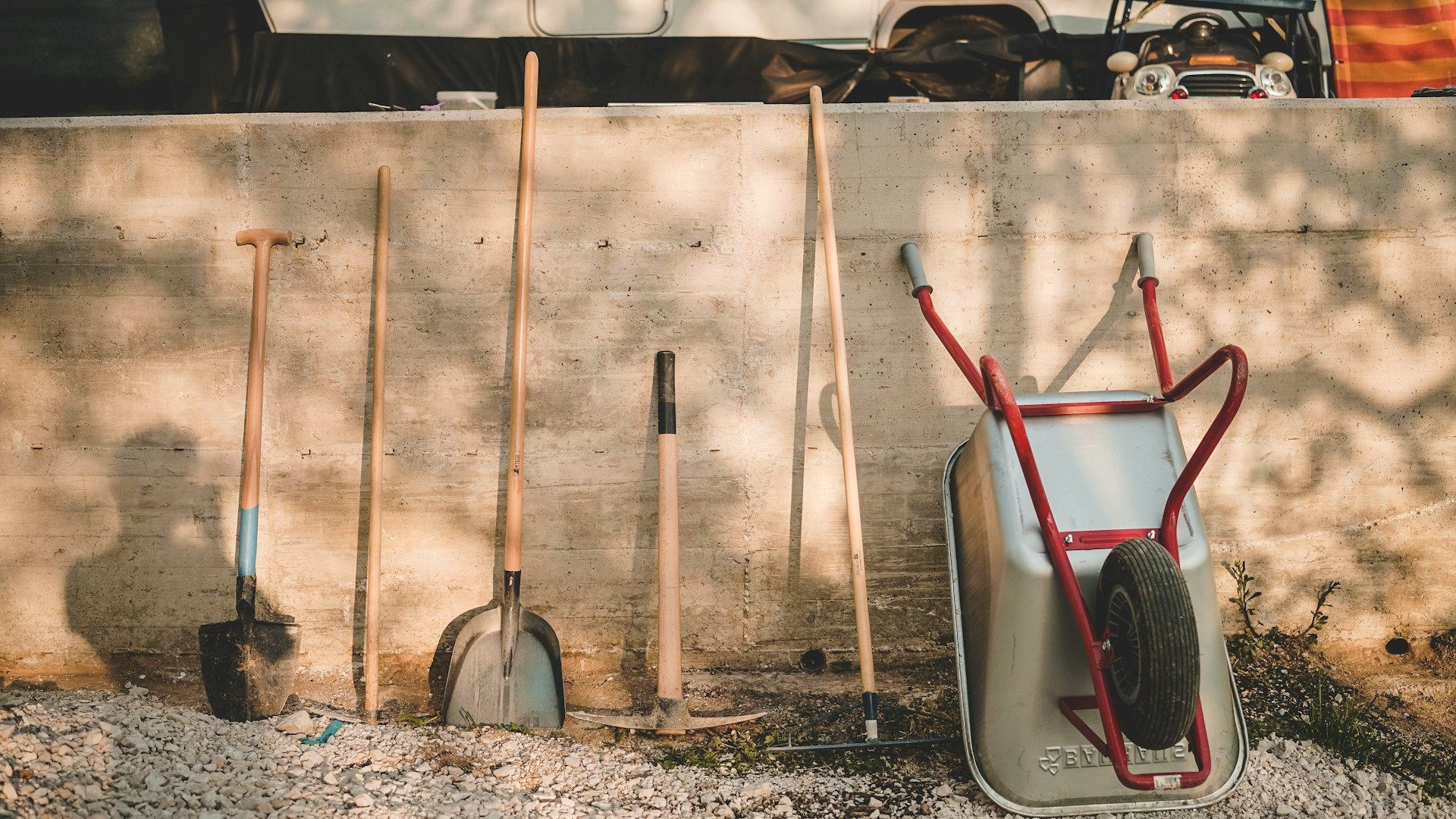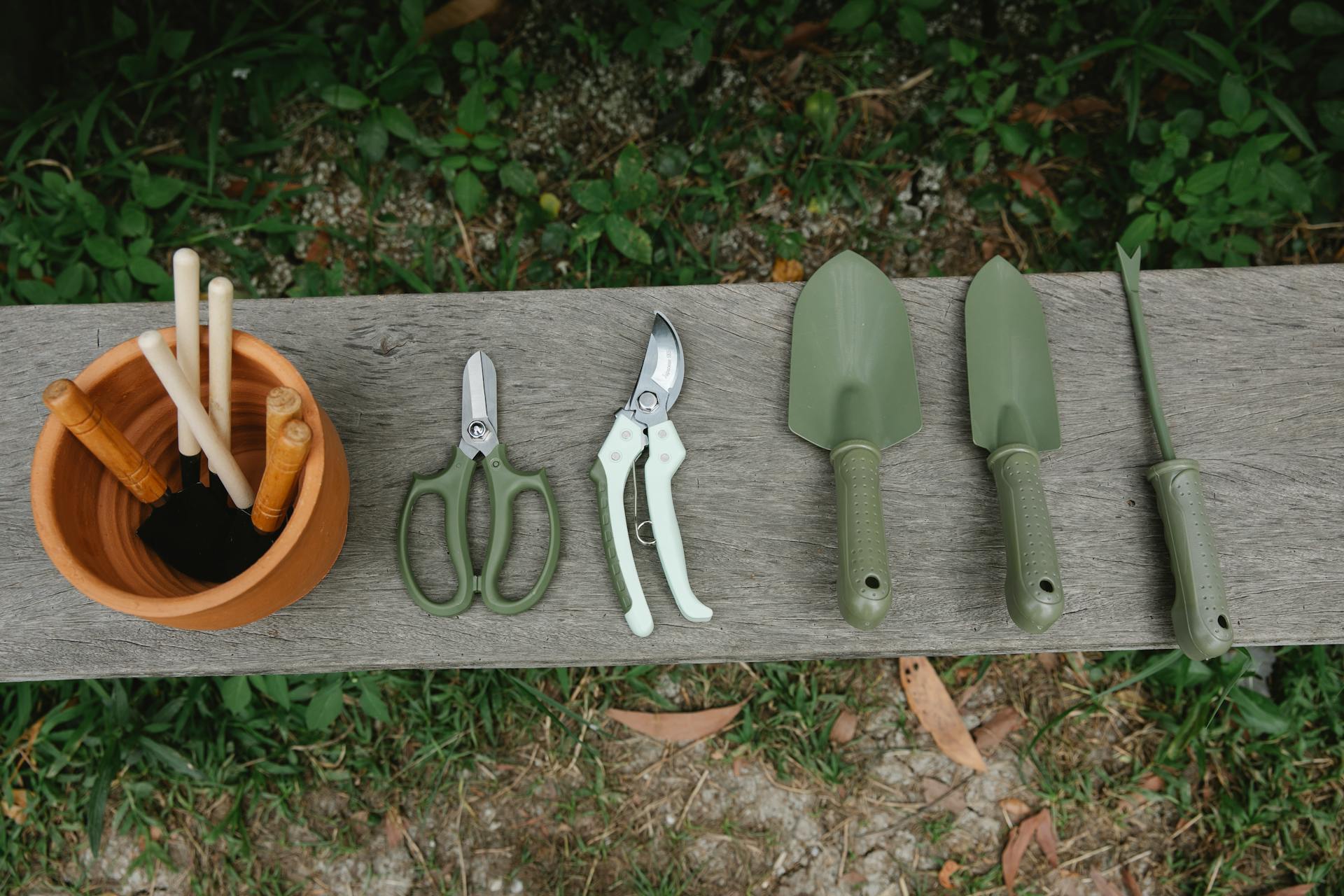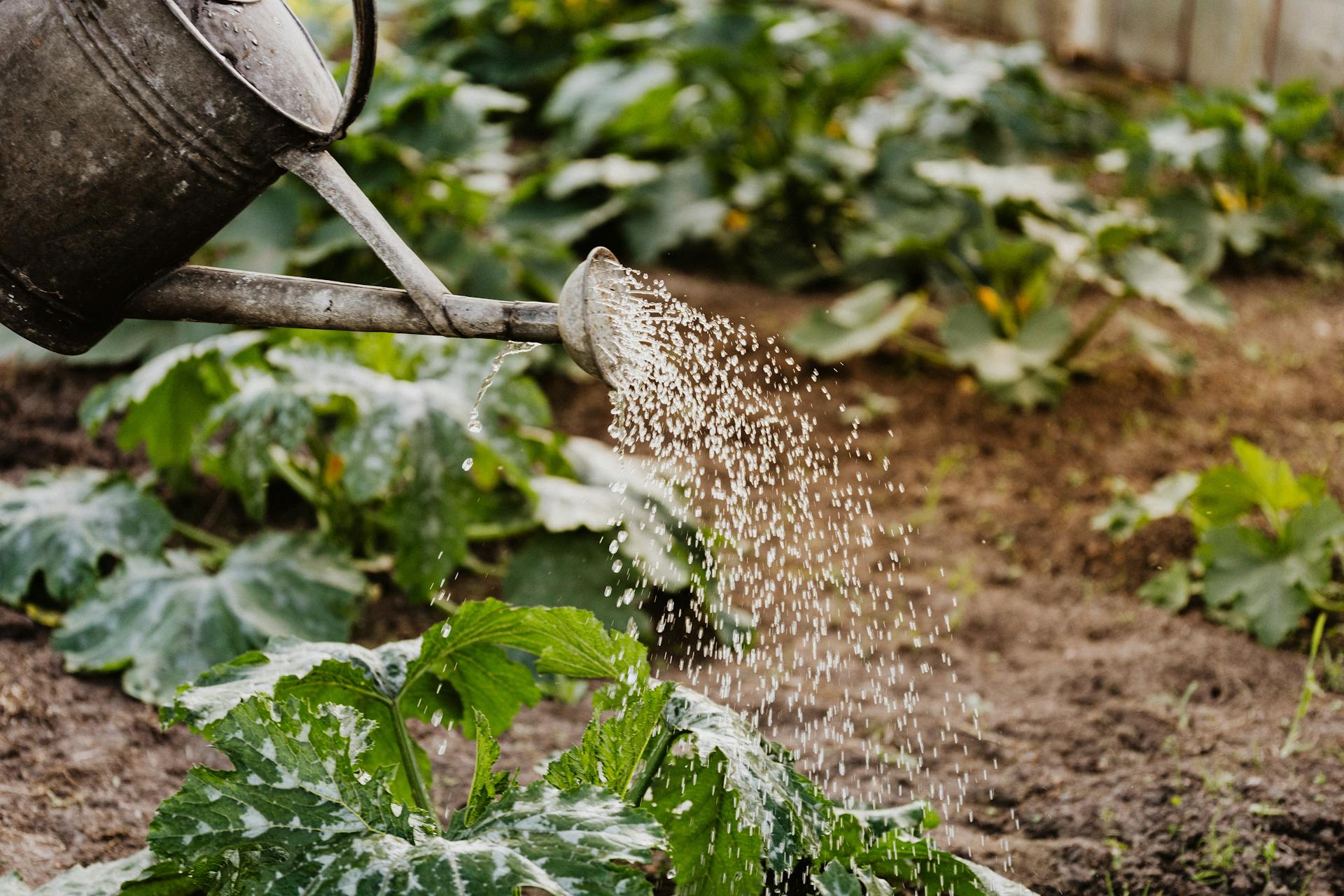
2 mins read
Gardening Tools Names: Soil Preparation and Maintenance
Spade
Functionality
Use for digging, turning soil, and transplanting plants. However, there are different types of spades for specific gardening needs. For general use, the pointed spade is an excellent option.
How to Use
Place the spade in front of you and press your foot down to push the spade into the soil. You don't need to exert too much force; use your body weight to drive the blade in, then tilt the handle to lift the soil.
When to Use
It is ideal for heavy-duty work such as preparing planting holes or creating garden plots.
What to Know Before Buying
The spade should be suited to your height so you will be comfortable and avoid straining your back. A stainless steel blade is much more durable but heavier than an aluminum blade.
Garden Fork
Functionality
The garden fork is easier to use than a spade as it is generally lighter. This tool is handy for aerating and turning soil and breaking up clods, and it causes less damage to plant roots than a spade.
How to Use
Thrust the tines into the ground using the force of your legs, using a levering motion to break and aerate the soil. If necessary, sharpen the tines of your garden fork.
When to Use
The garden fork is a versatile tool, ideal for various tasks. It's great for working with dense or clay soils, mixing organic materials into the soil, and even working in tighter spaces.
What to Know Before Buying
Ensure the tines are sturdy and the handle is solid and comfortable.
Broadfork
Functionality
It allows you to till the soil without turning it over, thus preserving its structure and microbial life.
How to Use
Push the tines of the broadfork into the soil, using the handle as a lever to lift and aerate the soil. Continue lifting and lowering the broadfork until you have tilled the desired area.
When to Use
Use the broadfork to prepare and aerate the soil, fostering plant growth while preserving soil structure and microbial life. Additionally, the broadfork allows you to work on a larger area than a garden fork.
What to Know Before Buying
Choose a broadfork appropriate for your strength, as they can be heavy, and consider the size of your garden.
Hand Cultivator
Functionality
The hand cultivator is a simple and ideal tool for beginners. It helps work the soil without turning it over. It aerates and weeds around plants while minimizing damage to roots, loosens the soil, and mixes in compost.
How to Use
Gently scrape the soil with the cultivator to remove weeds and aerate the soil. Insert the tines, then use a back-and-forth motion to loosen the soil.
When to Use
The hand cultivator is versatile and easy to use. It can be employed for many delicate gardening tasks and is an essential tool for any gardener.
What to Know Before Buying
Choose a cultivator with sturdy tines and an ergonomic handle for comfortable use.
Hoe
Functionality
Hoes are used for weeding, loosening the soil, and creating furrows for seeding. There are different types of hoes, each with its specific use.
How to Use
Hold the hoe with both hands, lift it, and drop it to dig or loosen the soil. Use the hoe's blade to cut weeds at ground level for weeding.
When to Use
The hoe can be used for many gardening tasks, such as loosening and aerating the soil, weeding, creating furrows and planting holes, hilling, and clearing.
What to Know Before Buying
Ensure that the blade is securely attached to the handle and is made of durable metal. Check that the tool's weight does not cause discomfort during use.
Hoe (Dutch Hoe)
Functionality
Primarily used for hoeing, the Dutch hoe can also be used to loosen the soil, weed, and hill plants. The tool is simple to use and offers versions with both short and long handles depending on the task at hand.
How to Use
Hold the hoe with both hands and slide the blade below the soil's surface. Pull the tool towards you, making short strokes. Use the strength of your legs to avoid injury. The blade should be regularly sharpened to maintain effectiveness.
When to Use
It is used for weeding and aerating around plants, minimizing root disturbance.
What to Know Before Buying
Choose a hoe with a sharp blade and an ergonomic handle to reduce effort.









